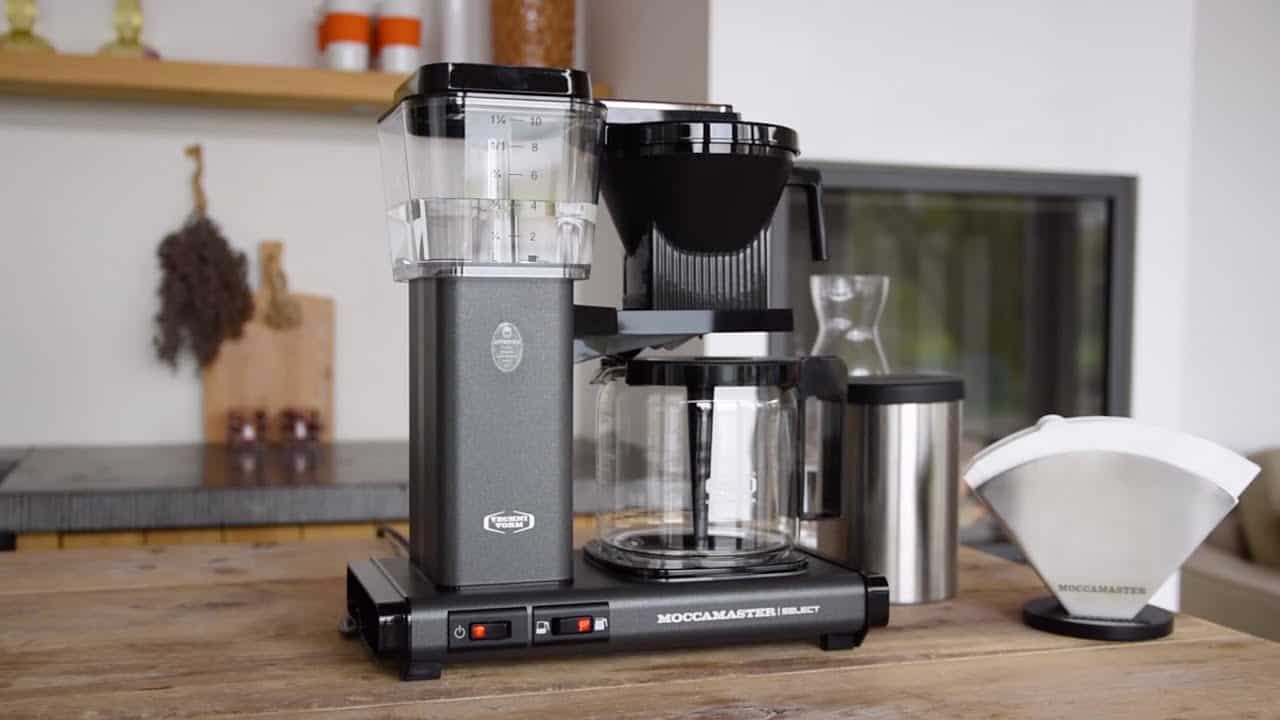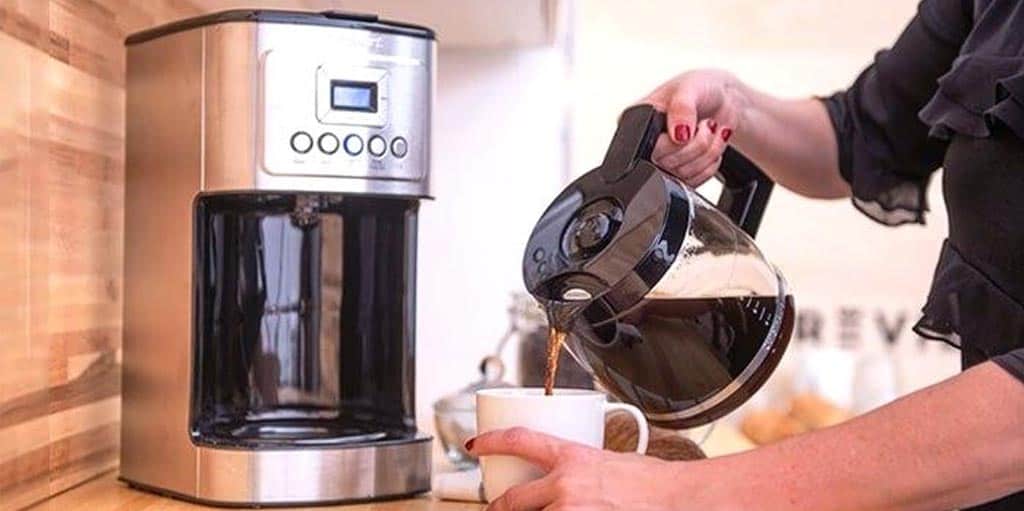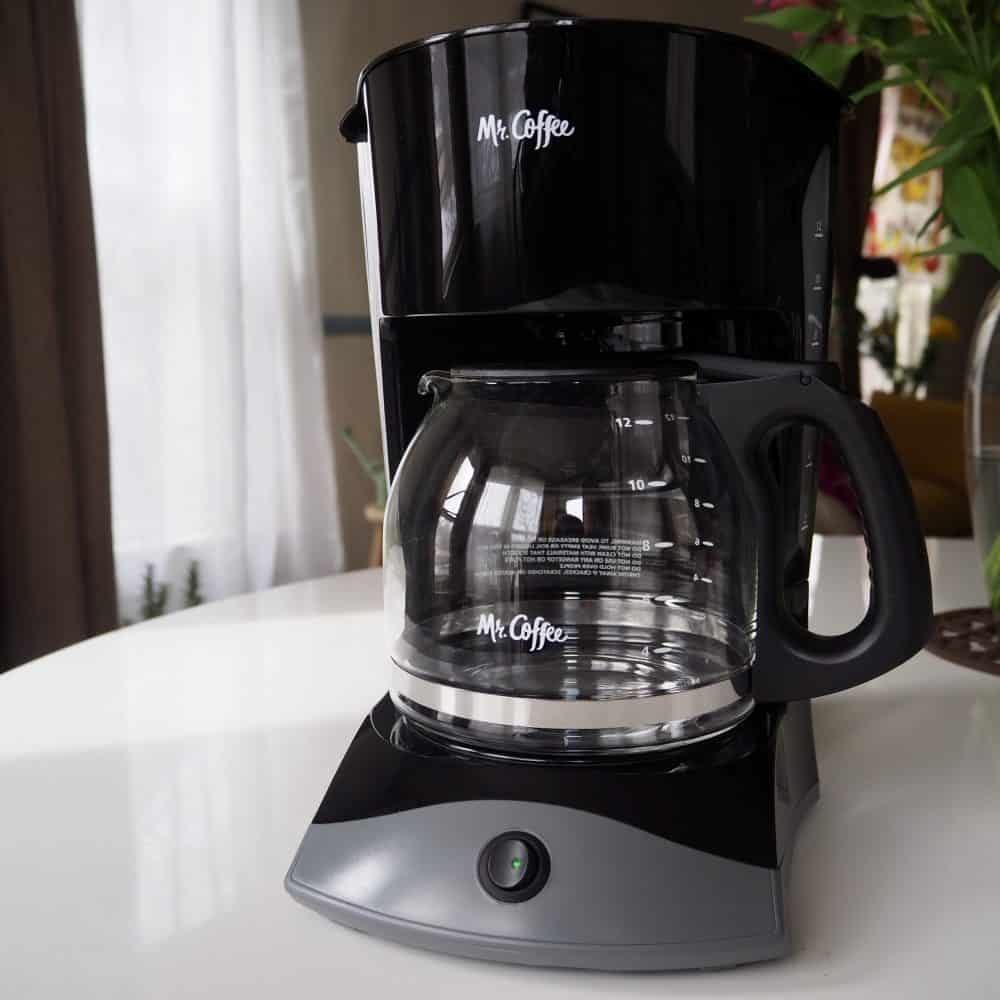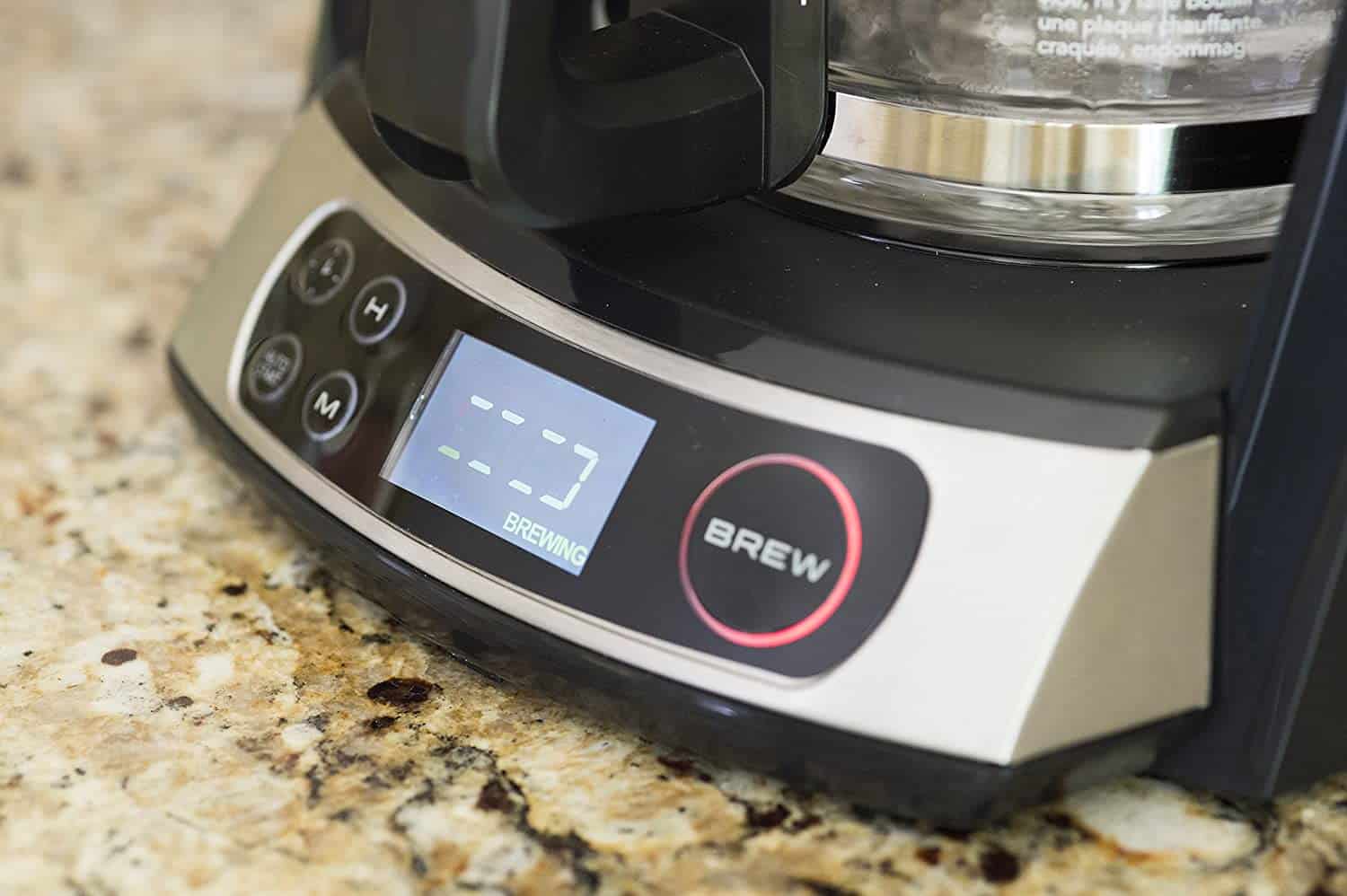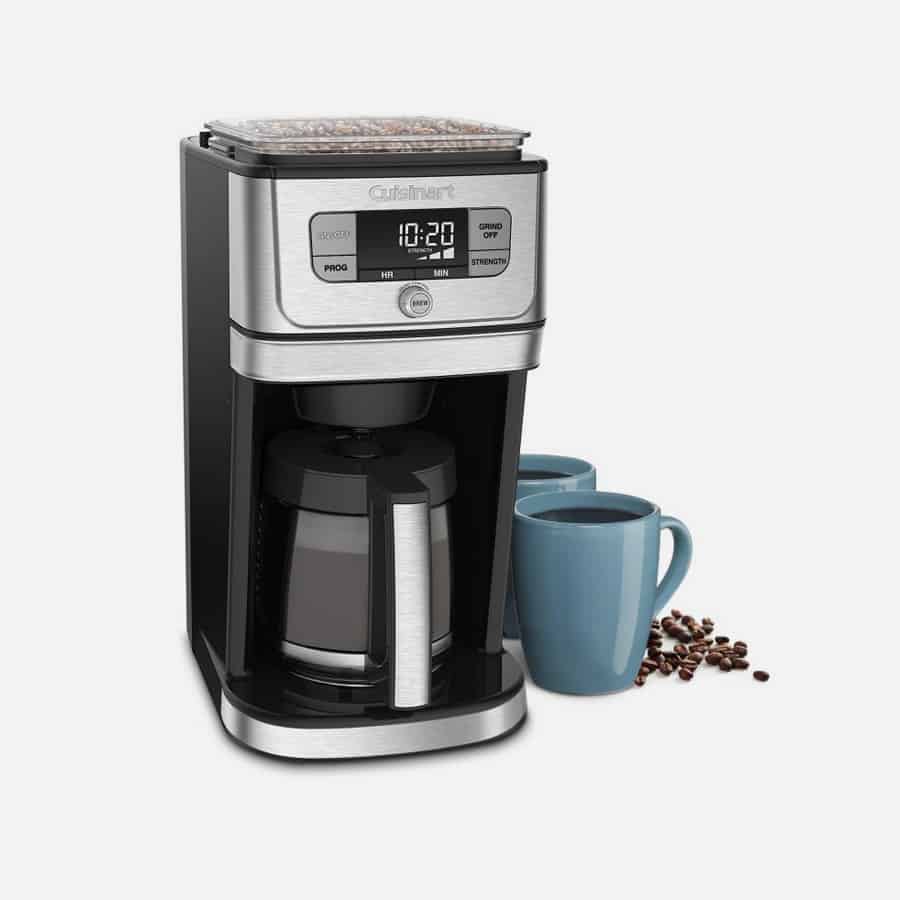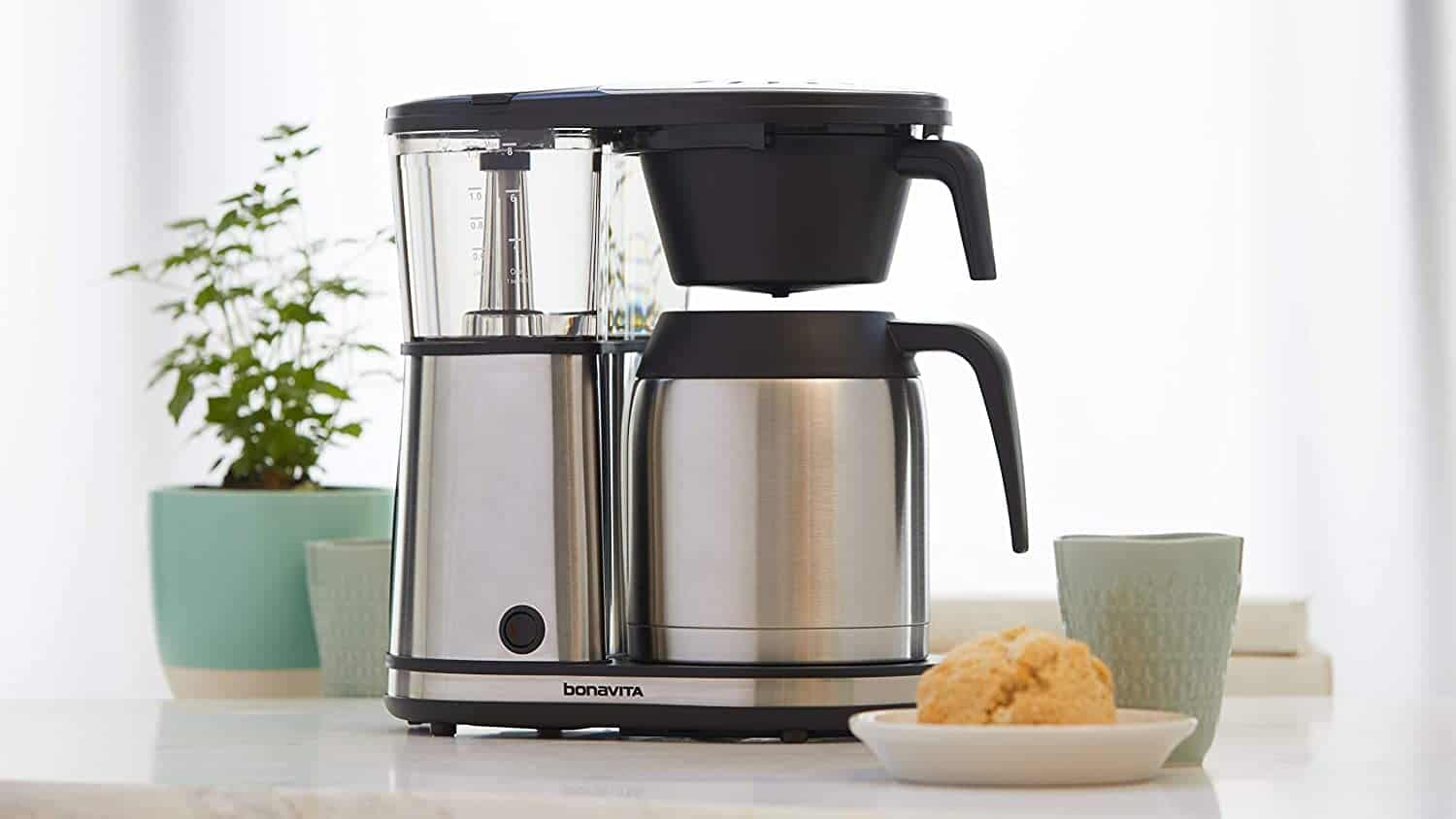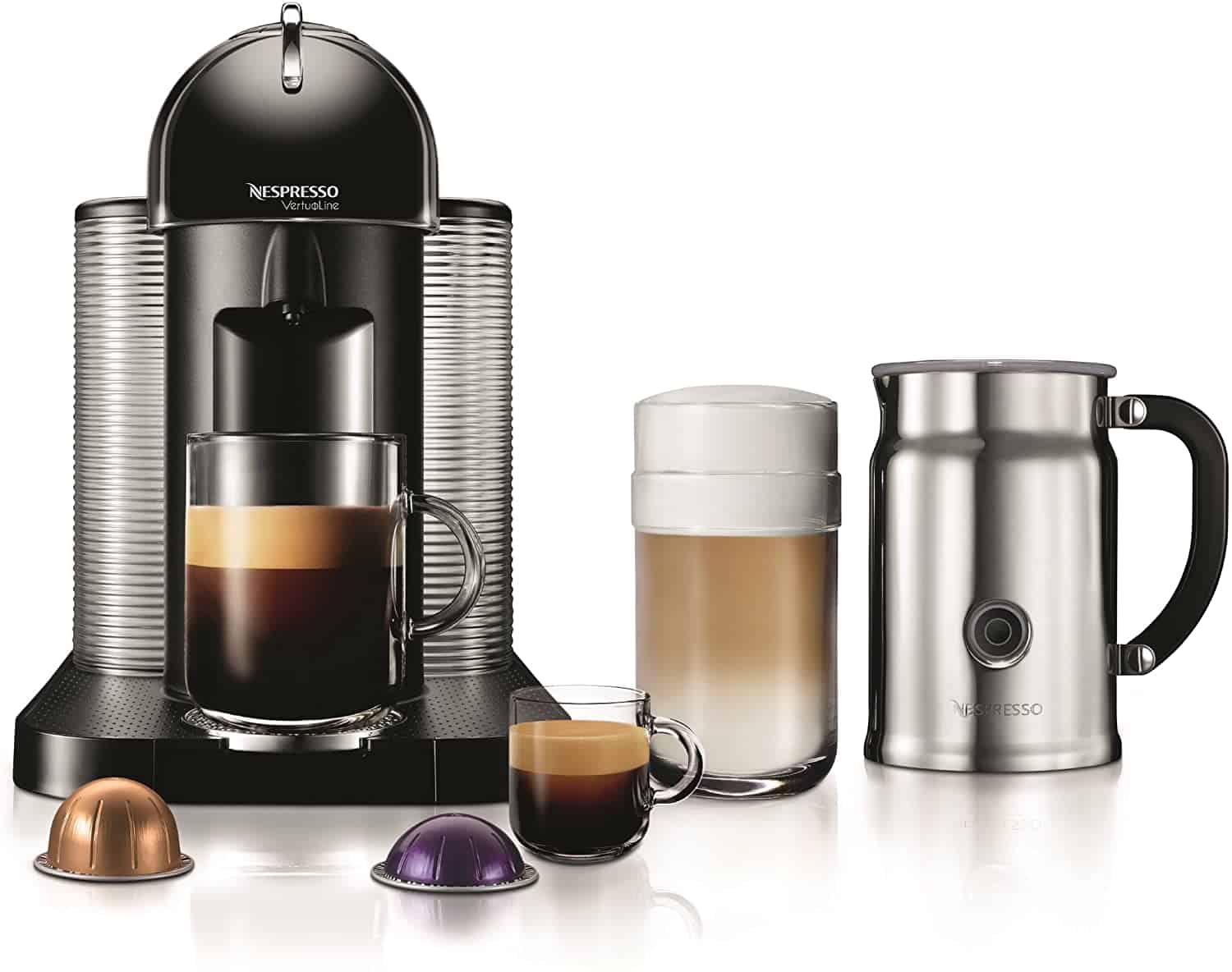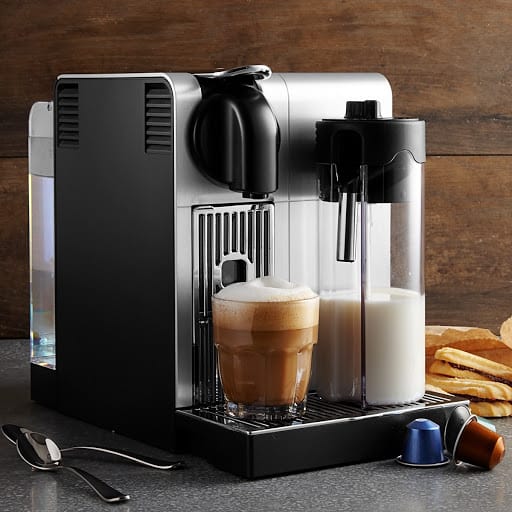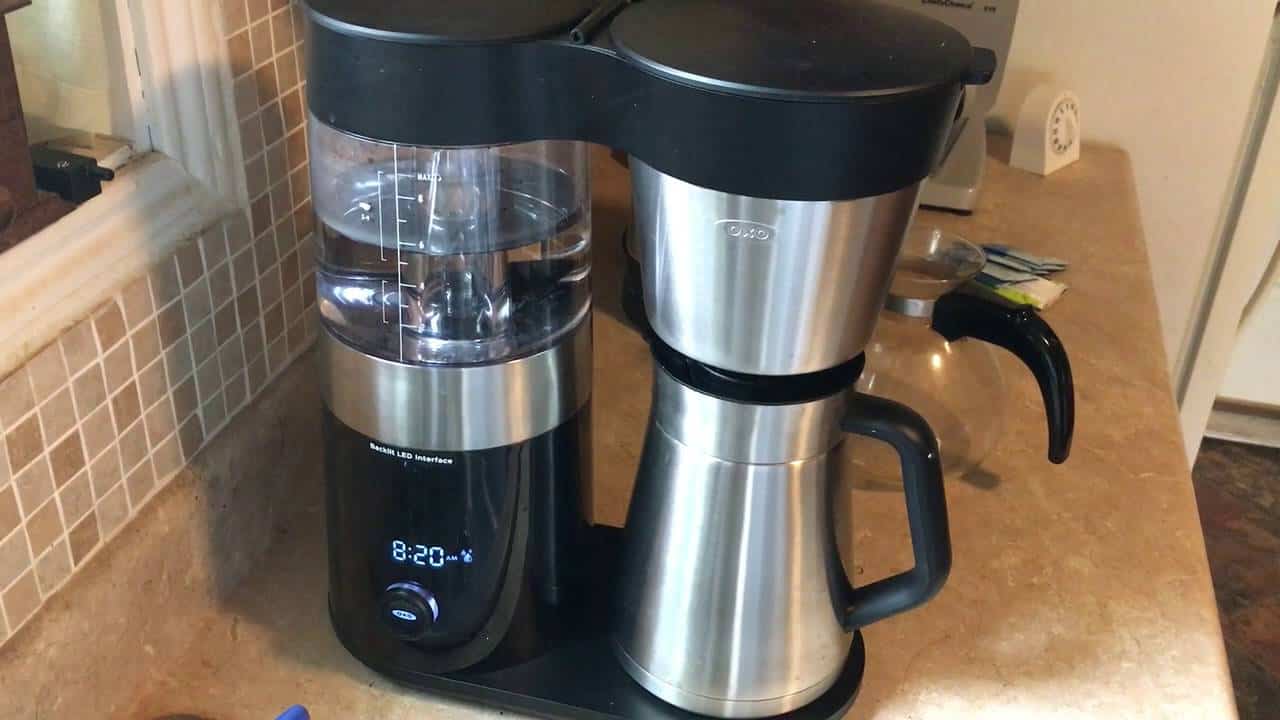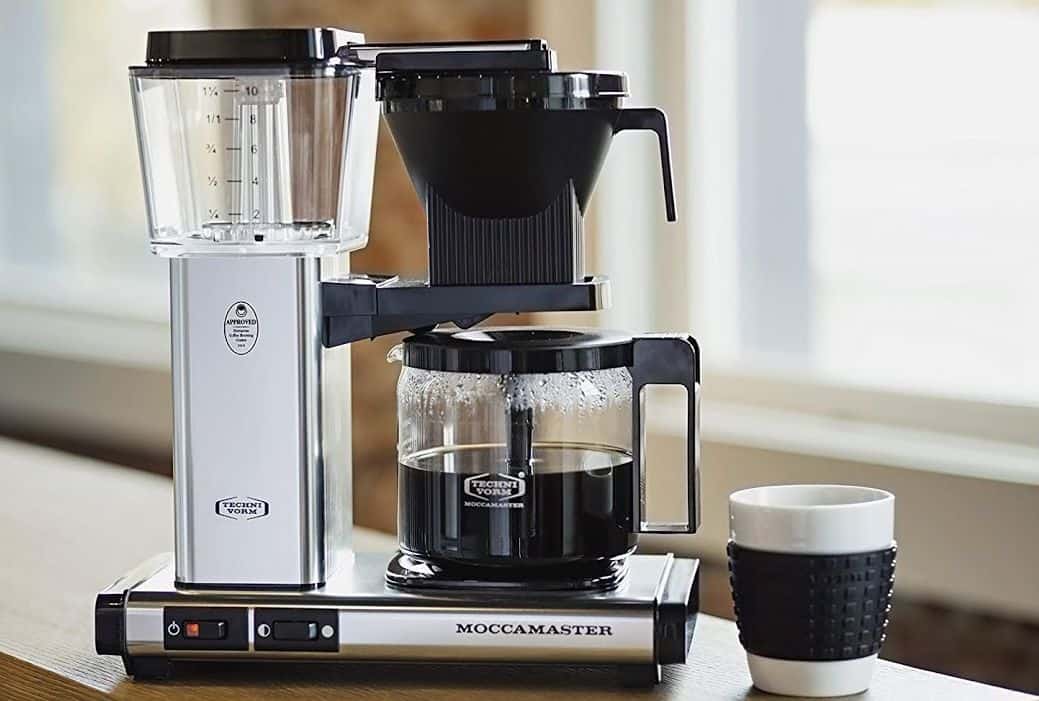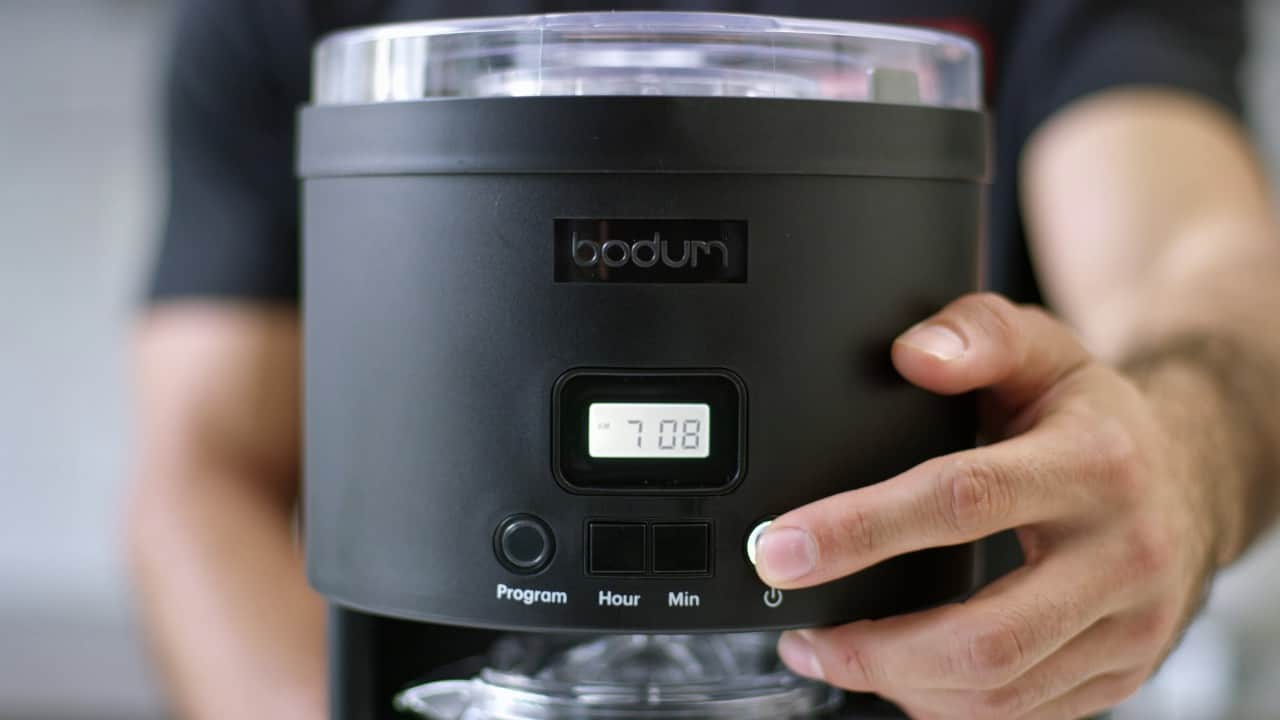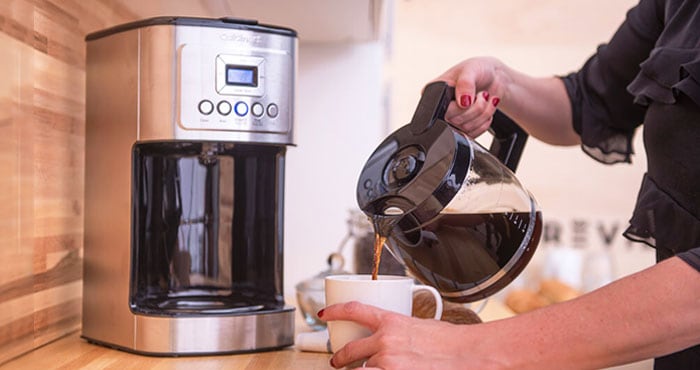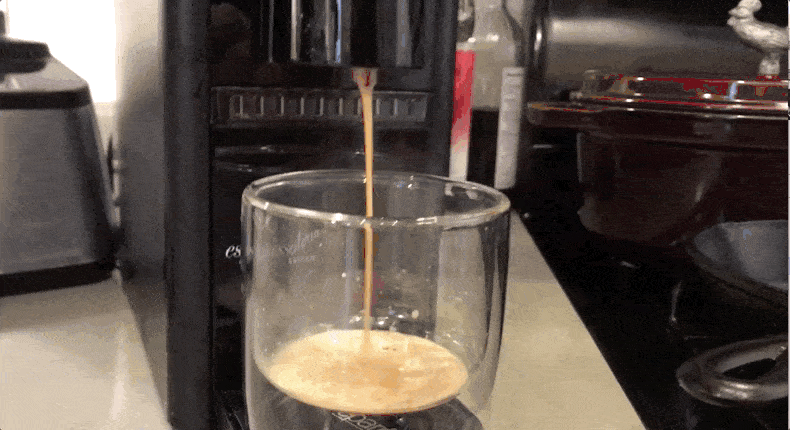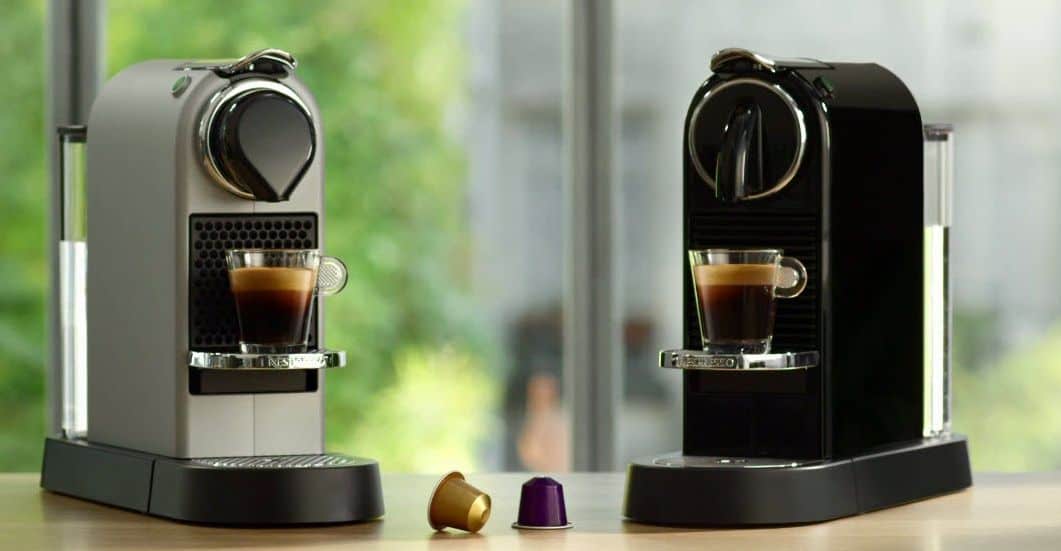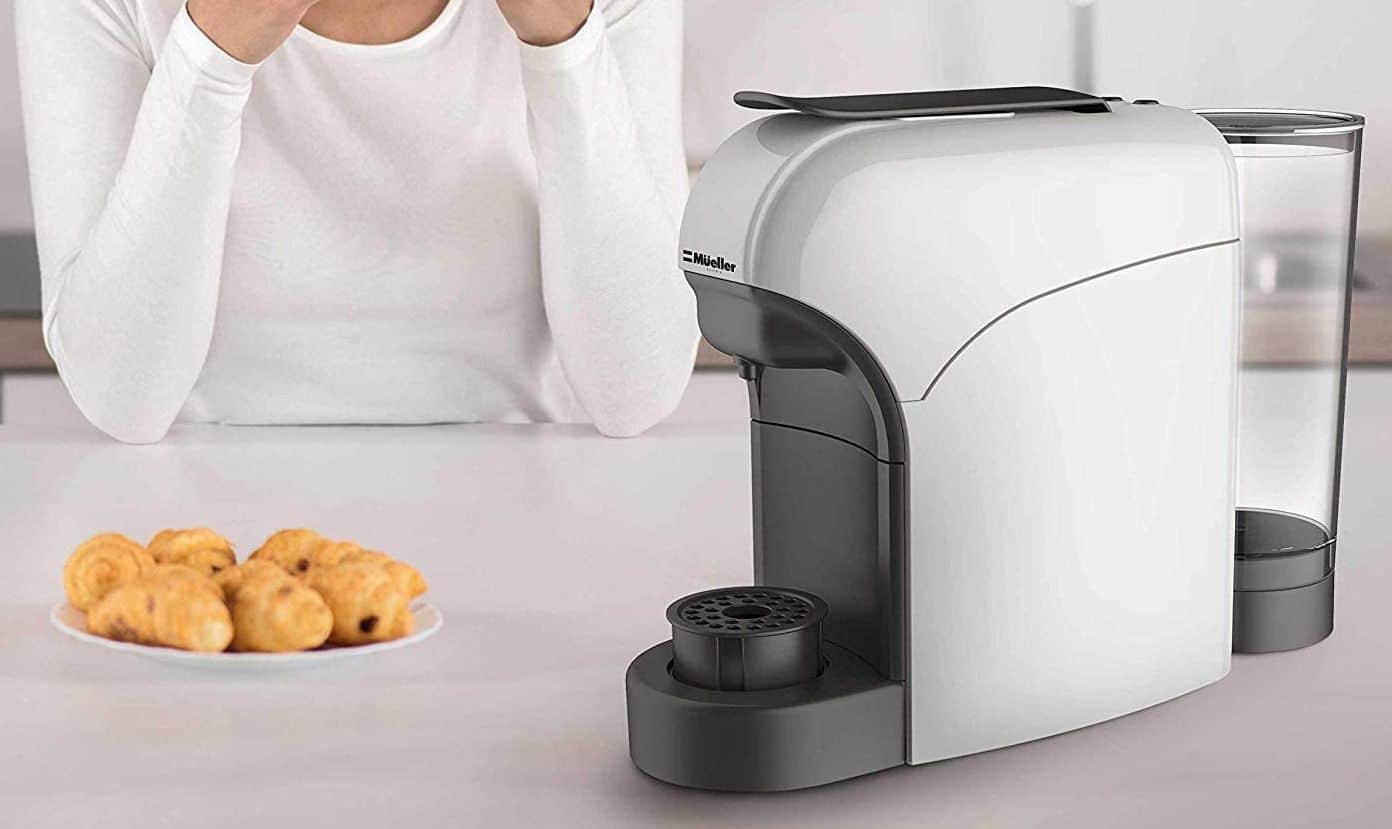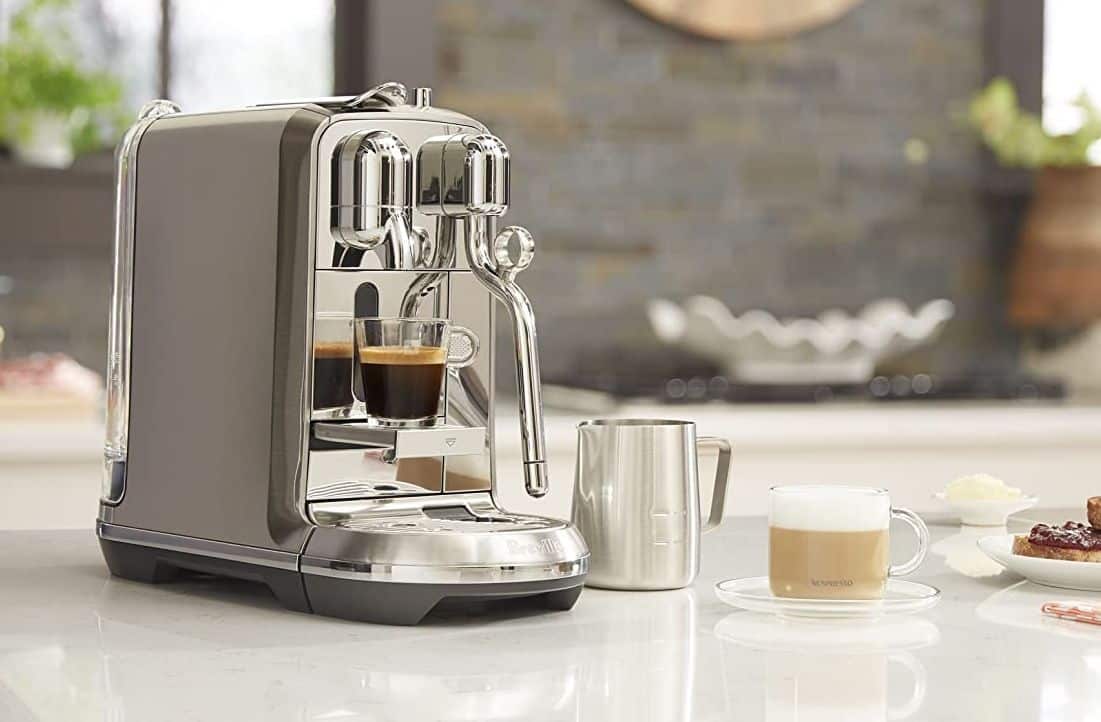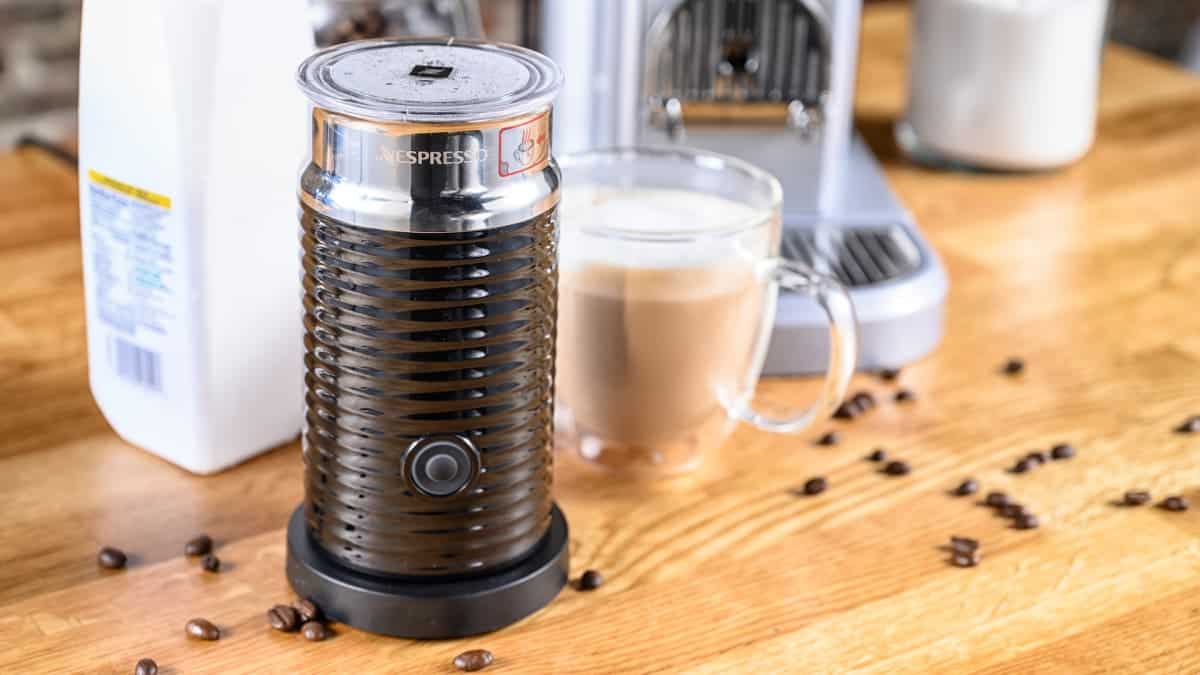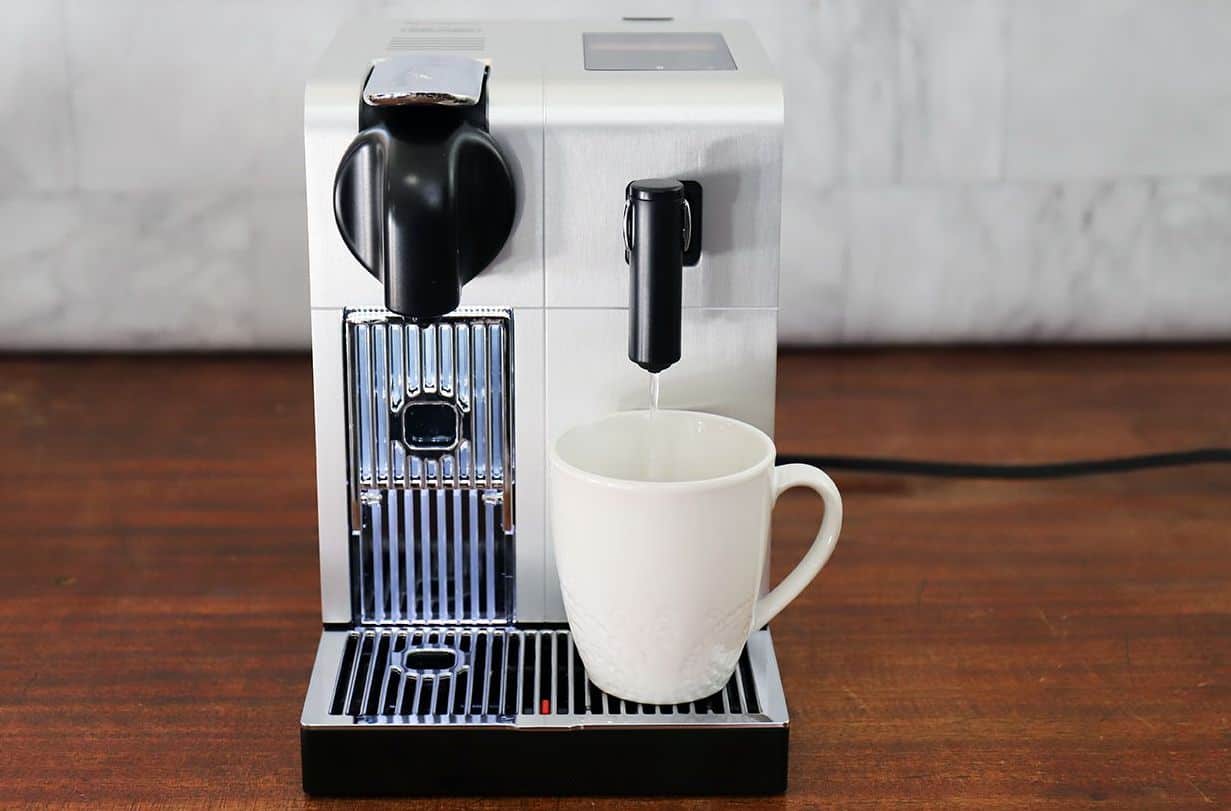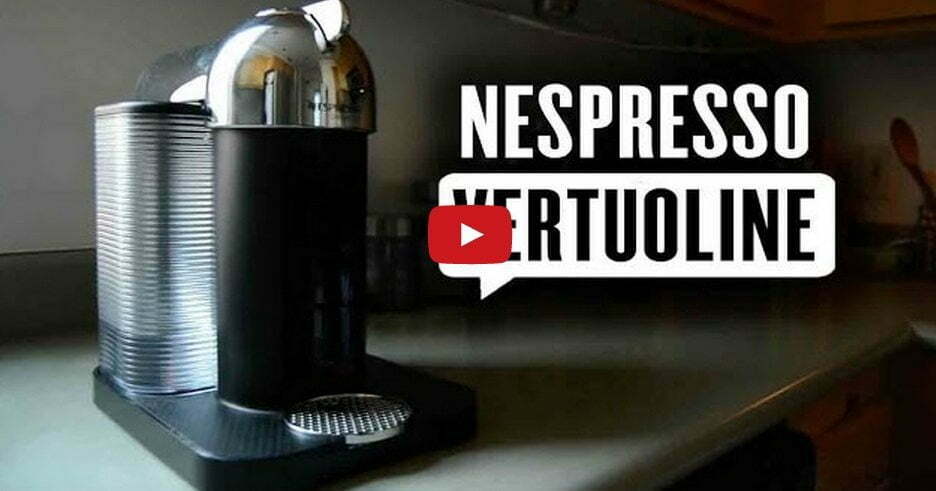You may wonder can you use bleach to clean your coffee maker if you make coffee every day. Most coffee lovers use their coffee machines every day, and it may be tempting to use stronger cleaning supplies than your standard dishwashing liquid. However, take care when choosing stronger cleaners for your best coffee maker since many are toxic when ingested. If you are curious about other, safer cleaning methods, find out the answer to can I use CLR to clean my coffee maker.
KEY TAKEAWAYS:
- You should avoid using bleach to clean your coffee maker’s pot, though using it on the outside of the machine is fine as long as it’s diluted.
- Bleach contains dangerous chemicals that will irritate the mouth and throat, but it becomes even more dangerous when mixed with certain other cleaning compounds.
- If you still want to clean your coffee maker using bleach, make sure you dilute it significantly with water.
Cleaning Your Coffee Machine
Just as you clean your dishes after each use, you likely want to clean your coffee maker after making at least one cup of coffee a day. Although coffee stains remain hard to remove, you should maintain caution as you choose your cleaning compounds. Bleach irritates the throat and mouth and should not be ingested. These characteristics make cleaning the internal parts of your coffee maker using bleach difficult because the coffee pot may not dry out properly, leaving bleach inside. Instead, you could use white vinegar, baking soda, lemon juice, or citric acid to clean a coffee maker.
Insider Tip
You may want to wear protective gloves when cleaning with bleach to avoid skin irritation.
Steps for Bleach Cleaning
- Tools Needed:
- 2 teaspoons bleach
- 1 gallon of water
- Dirty coffee pot
- Washcloth (for exterior)
- Gloves (optional; for protection)
STEP 1
Separate your coffee pot from your coffee machine. You should never run bleach through the brewing portion of your device, as it can eat away at the parts inside as the coffee brews or the area where the water falls into the filter basket. Likewise, do not put bleach in your grounds compartment. If desired, you should wash out the grounds compartment with dish soap and water.
STEP 2
Add your two teaspoons of bleach and your gallon of water. If possible, put the bleach in first and then the water. You will need to stir the compound to make sure all of it is diluted. You should not use more than two teaspoons of bleach unless you increase the water in the same ratio. This dilution makes the bleach less potent, which lessens the toxicity slightly.
STEP 3
Soak your empty coffee pot in this compound for a few minutes. This step helps further the sanitation of the pot. If you want to clean the appliance’s exterior, this delay becomes the best time to do so. Just dip your washcloth in the solution while wearing your protective gloves and wipe off the exterior.
STEP 4
Rinse everything thoroughly. Thankfully, bleach presents a strong odor, so you can tell if there is still a lot of it present. However, you may want to rinse the pot multiple times after the smell dissipates to avoid ingesting bleach.
STEP 5
Let the coffee pot air dry completely. After it is completely dry, you can use the device as you normally would. Enjoy your coffee.
Keurig-like Coffee Machines
You should not use bleach to clean inside a Keurig-style coffee maker. Just as with standard coffee machines, the bleach could damage the interior of the product. To avoid damage, the machine manufacturers offer a “descale solution” that comes in either a pouch or bottle. The solution passes through the brewing area without a filter or coffee grounds. You can find further instructions on their website.
Warning
Bleach is a mouth and throat irritant and isn’t the best cleaning solution; we generally recommend vinegar or citric acid instead.
F.A.Q.S
How do I clean my coffee maker with apple cider vinegar?
You will need an empty coffee machine to start. Then, mix the vinegar with water and pour it into the water reservoir. Then, complete a full brew cycle. Finally, run two clean water-only cycles before washing the carafe and filter basket with soap and water.
Is it safe to use undiluted bleach to clean a coffee maker?
Absolutely not. You should not use undiluted bleach to clean a coffee maker. You should always maintain high water to bleach ratio and dilute the bleach significantly (two tablespoons of bleach to a gallon of water). You may also use an alternate cleaning mixture.
How do you remove calcium deposits from a coffee maker?
The above method for using apple cider vinegar or white vinegar should help with calcium buildup and mold in your coffee maker. However, if you have a Keurig-type coffee machine, you should use their descaling solution.
STAT: Acute exposure to high concentrations of bleach can cause eye and skin injury. (source)
REFERENCES:
- https://www.homedepot.com/c/ah/how-to-clean-a-coffee-maker/9ba683603be9fa5395fab90e518b251
- https://www.clorox.com/learn/how-to-clean-coffee-maker-with-bleach/
- https://www.keurig.com/descale-instructionsr
- https://www3.epa.gov/pesticides/chem_search/reg_actions/reregistration/fs_G-77_1-Sep-91.pdf
- https://youtu.be/JTDi2bhjtKw















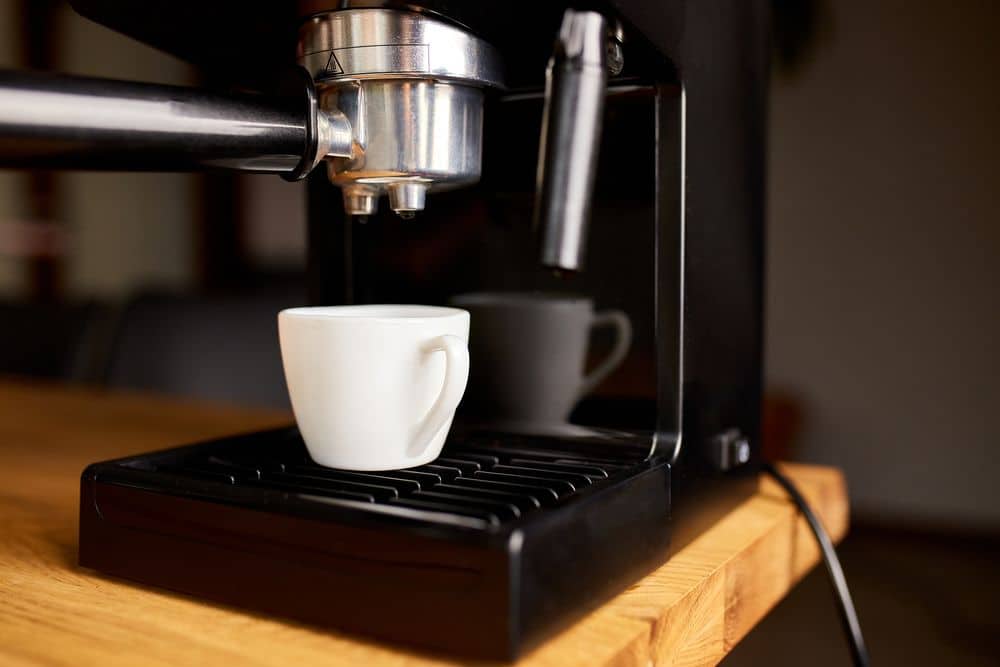
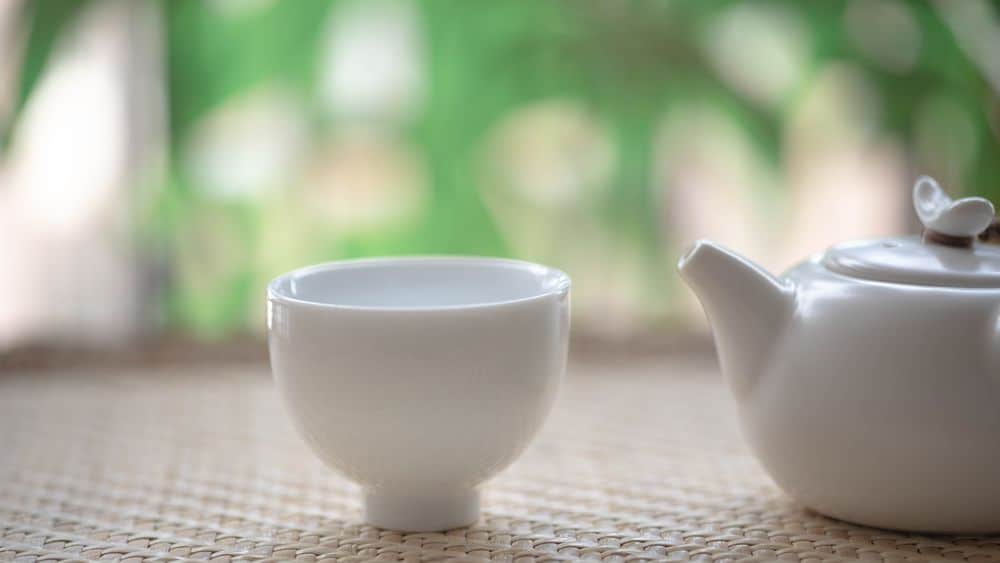
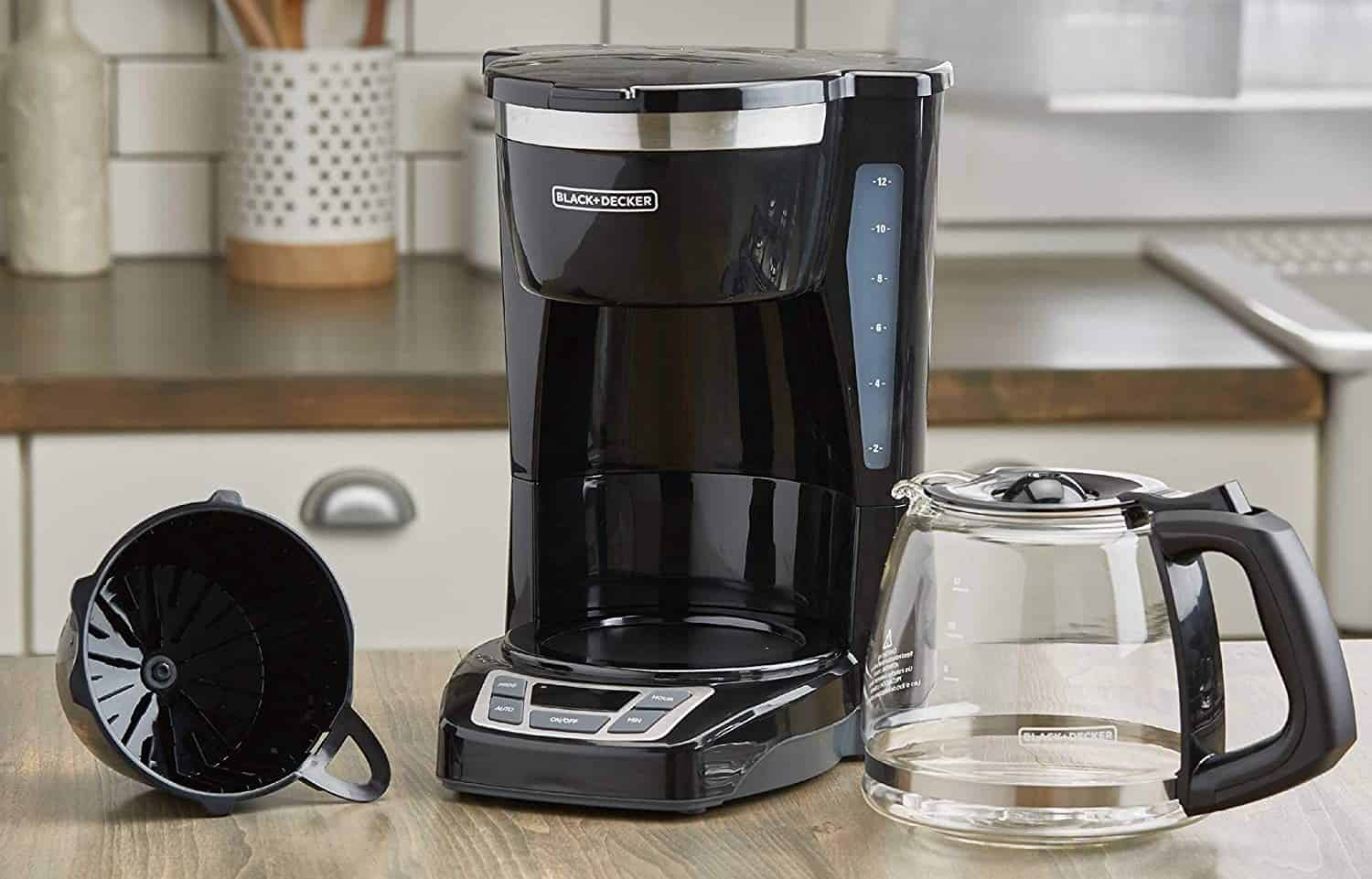
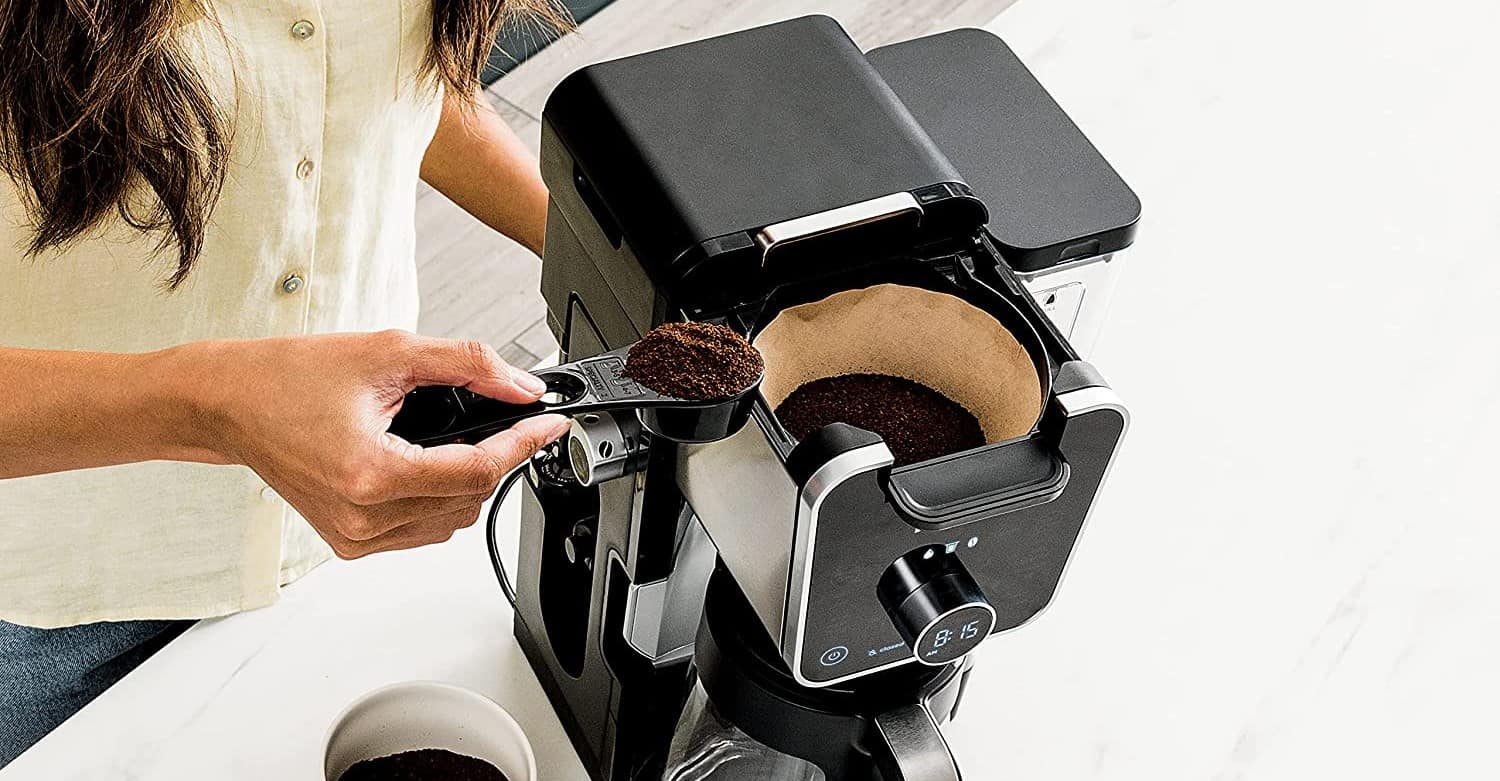
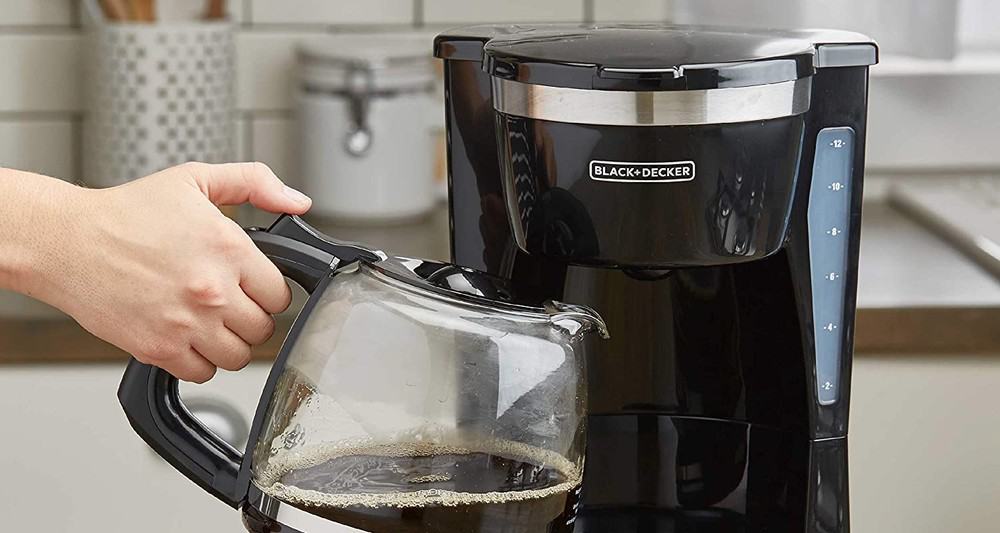
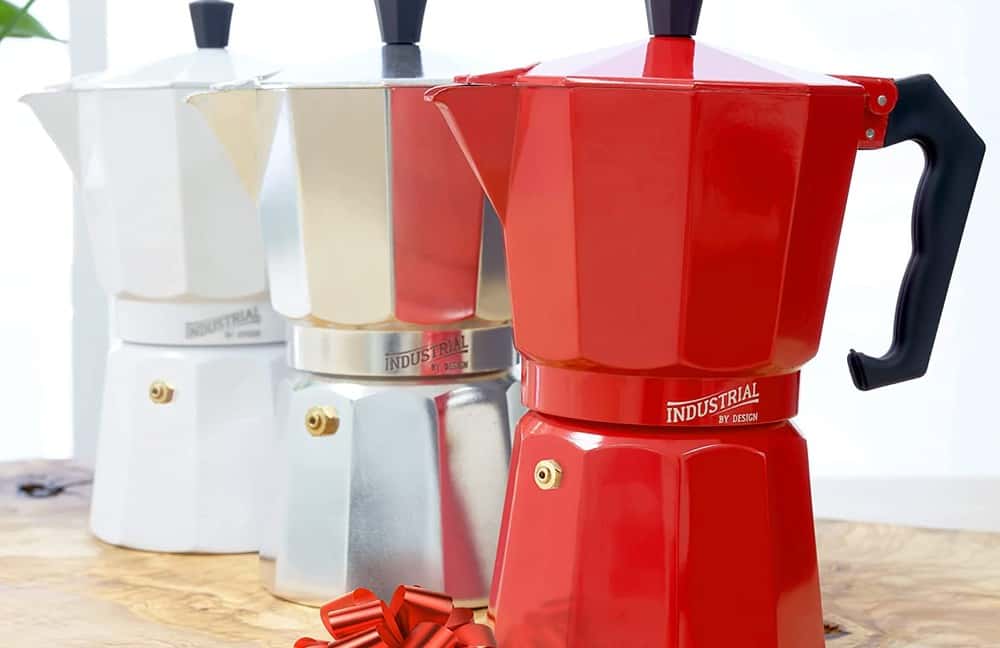
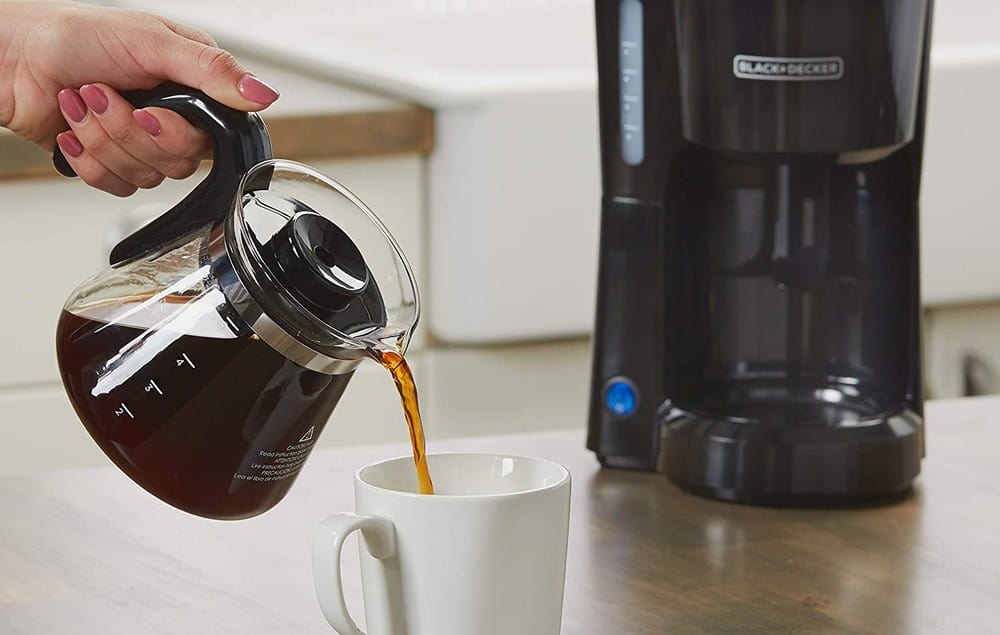
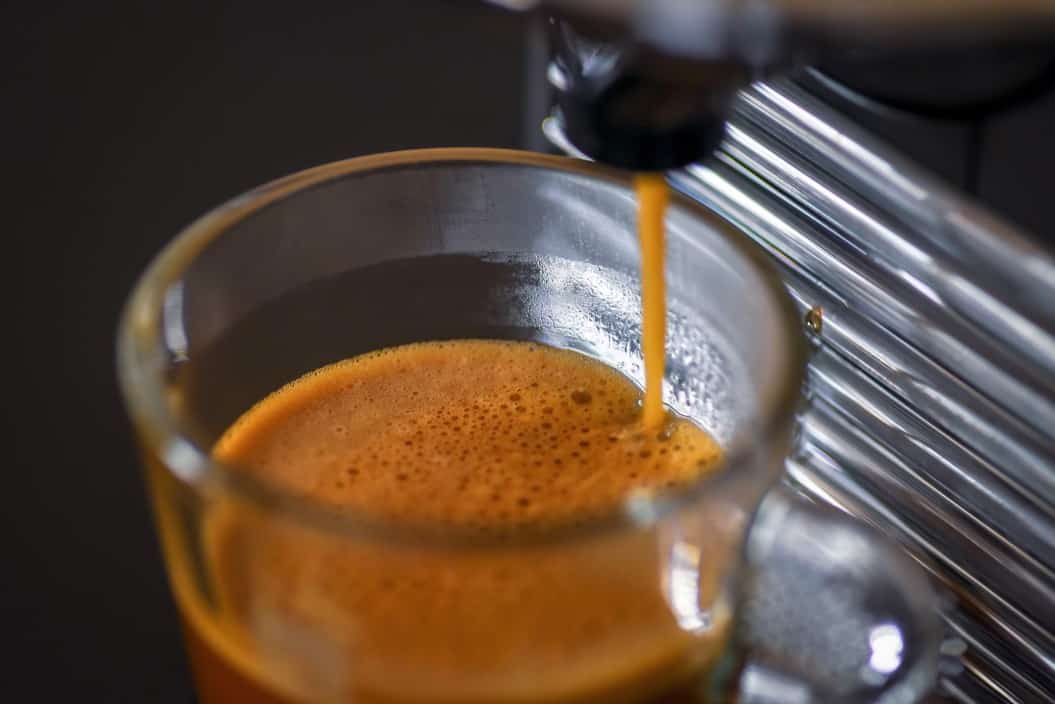



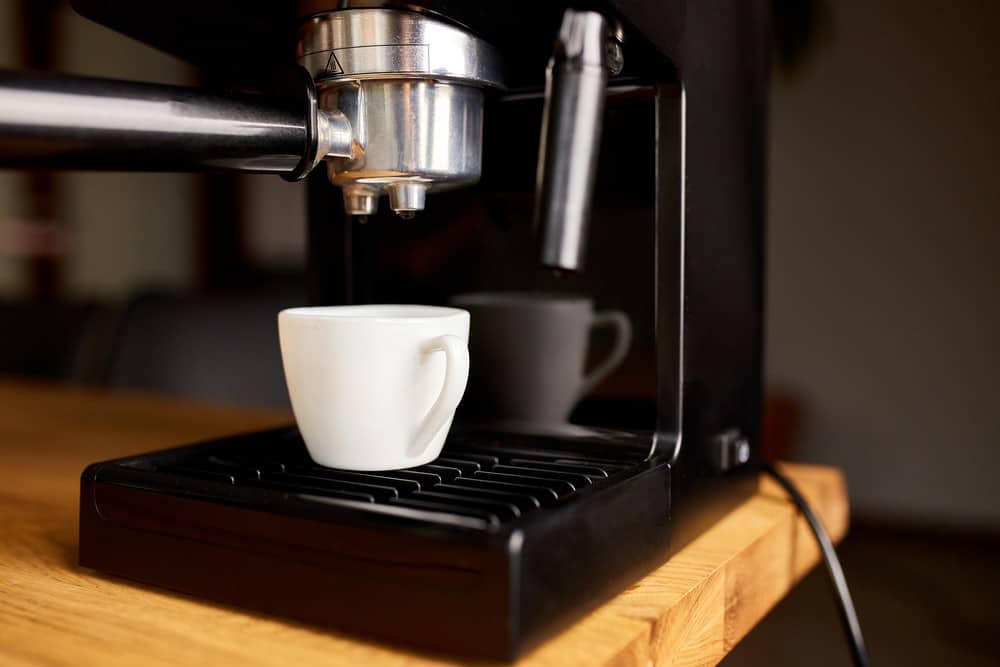

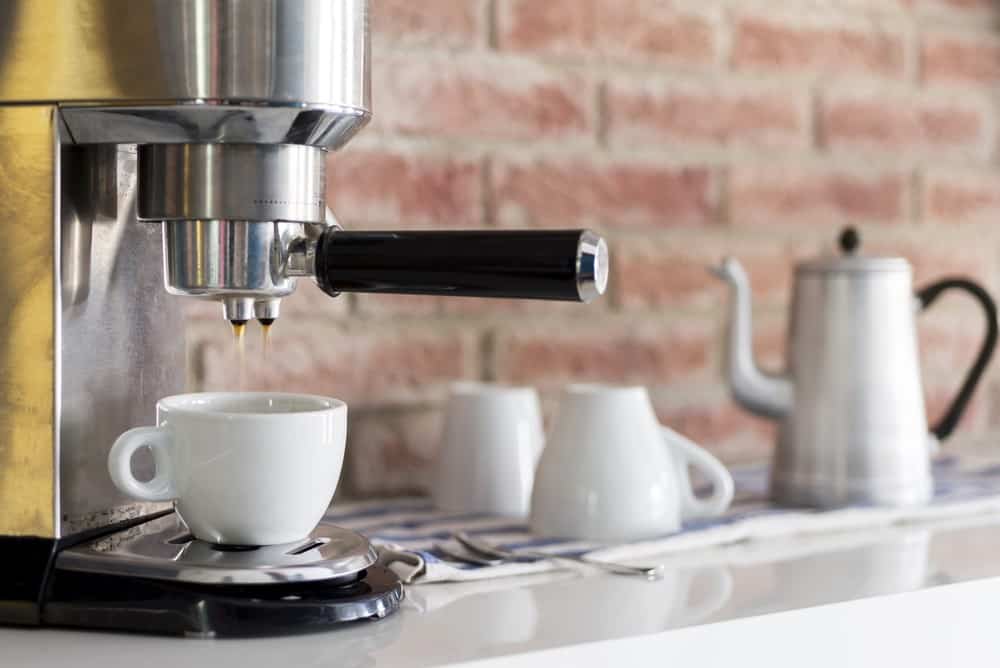
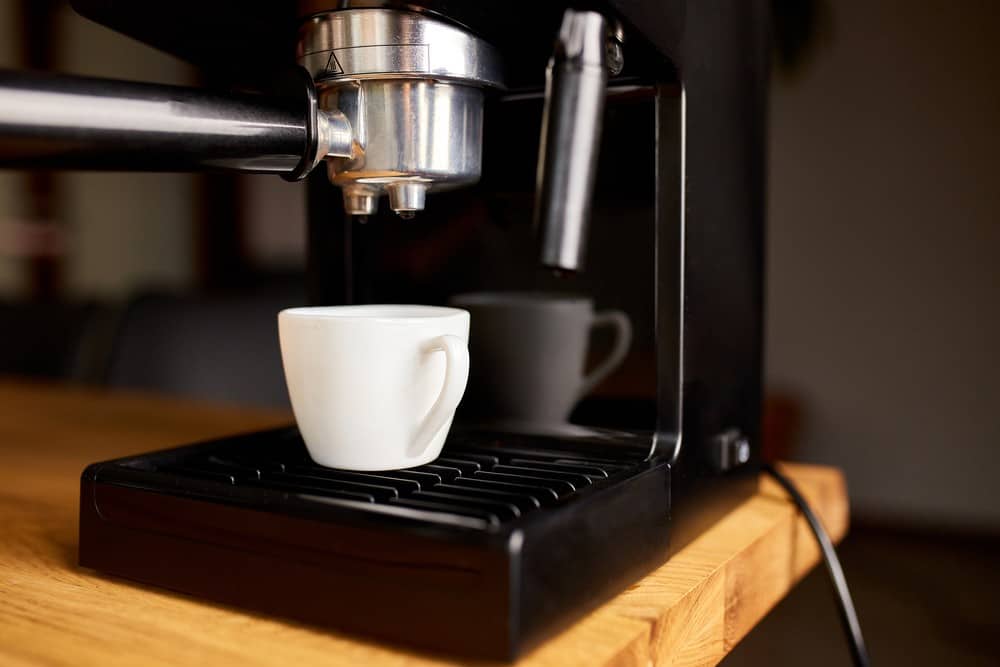


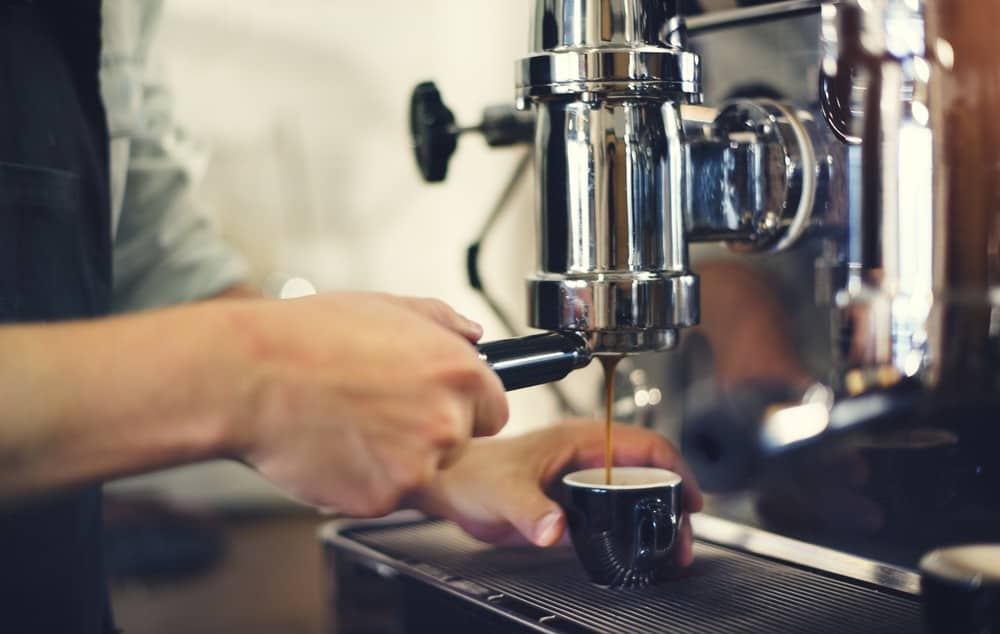
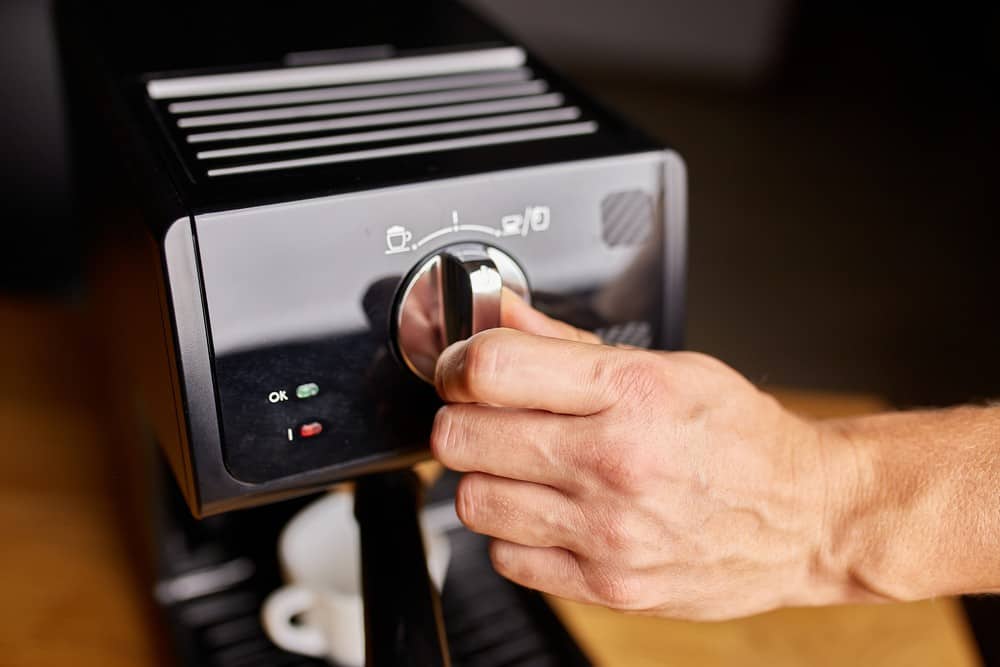
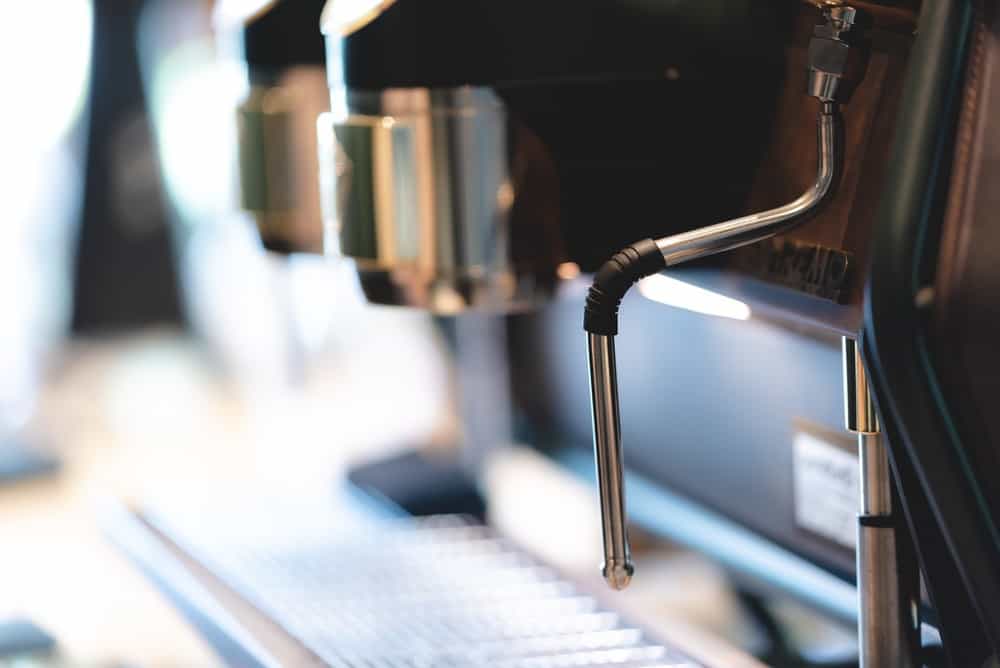
![Best Keurig Alternatives in [year] 27 Best Keurig Alternatives in 2025](https://www.gadgetreview.dev/wp-content/uploads/best-keurig-alternative-image.jpg)
![Best Semi Automatic Espresso Machines in [year] 28 Best Semi Automatic Espresso Machines in 2025](https://www.gadgetreview.dev/wp-content/uploads/best-semi-automatic-espresso-machine-image.jpg)
![Best Coffee and Espresso Makers in [year] 29 Best Coffee and Espresso Makers in 2025](https://www.gadgetreview.dev/wp-content/uploads/best-coffee-and-espresso-maker-image.jpg)
![Best Kitchen Appliances in [year] ([month] Reviews) 30 Best Kitchen Appliances in 2025 (December Reviews)](https://www.gadgetreview.dev/wp-content/uploads/best-kitchen-appliances.jpg)
![Quietest Coffee Makers in [year] 31 Quietest Coffee Makers in 2025](https://www.gadgetreview.dev/wp-content/uploads/quietest-coffee-maker-image.jpg)
![Best Prosumer Espresso Machines in [year] 32 Best Prosumer Espresso Machines in 2025](https://www.gadgetreview.dev/wp-content/uploads/71ytF6efAlL._AC_SL1500_.jpg)
![Best Single Serve Coffee Maker No Pods in [year] 33 Best Single Serve Coffee Maker No Pods in 2025](https://www.gadgetreview.dev/wp-content/uploads/best-k-pod-coffee-image-1.jpg)
![Best Coffee Makers for Hard Water in [year] 34 Best Coffee Makers for Hard Water in 2025](https://www.gadgetreview.dev/wp-content/uploads/best-coffee-maker-for-hard-water-image.jpg)
![Best Dual Boiler Espresso Machines in [year] 35 Best Dual Boiler Espresso Machines in 2025](https://www.gadgetreview.dev/wp-content/uploads/best-dual-boiler-espresso-machine-image.jpg)
![Best Coffee Makers for RV in [year] 36 Best Coffee Makers for RV in 2025](https://www.gadgetreview.dev/wp-content/uploads/best-coffee-maker-for-rv-image.jpg)
![Best Ninja Coffee Makers in [year] 37 Best Ninja Coffee Makers in 2025](https://www.gadgetreview.dev/wp-content/uploads/best-ninja-coffee-maker-image.jpg)
![Best Breville Espresso Machines in [year] 38 Best Breville Espresso Machines in 2025](https://www.gadgetreview.dev/wp-content/uploads/best-breville-espresso-machine-image.jpg)
![Best 5 Cup Coffee Makers in [year] 39 Best 5 Cup Coffee Makers in 2025](https://www.gadgetreview.dev/wp-content/uploads/best-5-cup-coffee-maker-image.jpg)
![Best Commercial Coffee Makers in [year] 40 Best Commercial Coffee Makers in 2025](https://www.gadgetreview.dev/wp-content/uploads/best-commercial-coffee-maker-image.jpg)
![Best Commercial Espresso Machine for a Small Coffee Shop in [year] 41 Best Commercial Espresso Machine for a Small Coffee Shop in 2025](https://www.gadgetreview.dev/wp-content/uploads/best-commercial-espresso-machine-small-coffee-shop-image.jpg)
![Best Coffee for Moka Pot in [year] 42 Best Coffee for Moka Pot in 2025](https://www.gadgetreview.dev/wp-content/uploads/best-coffee-for-moka-pot-image.jpg)
![Best USA Made Coffee Makers in [year] 43 Best USA Made Coffee Makers in 2025](https://www.gadgetreview.dev/wp-content/uploads/best-usa-made-coffee-makers-image.jpg)
![Fastest Coffee Makers in [year] 44 Fastest Coffee Makers in 2025](https://www.gadgetreview.dev/wp-content/uploads/fastest-coffee-maker-image.jpg)
![Best SCAA Certified Coffee Makers in [year] 45 Best SCAA Certified Coffee Makers in 2025](https://www.gadgetreview.dev/wp-content/uploads/best-scaa-certified-coffee-maker-image.jpg)
![Best Smart Coffee Makers in [year] 46 Best Smart Coffee Makers in 2025](https://www.gadgetreview.dev/wp-content/uploads/best-smart-coffee-maker-image.jpg)
